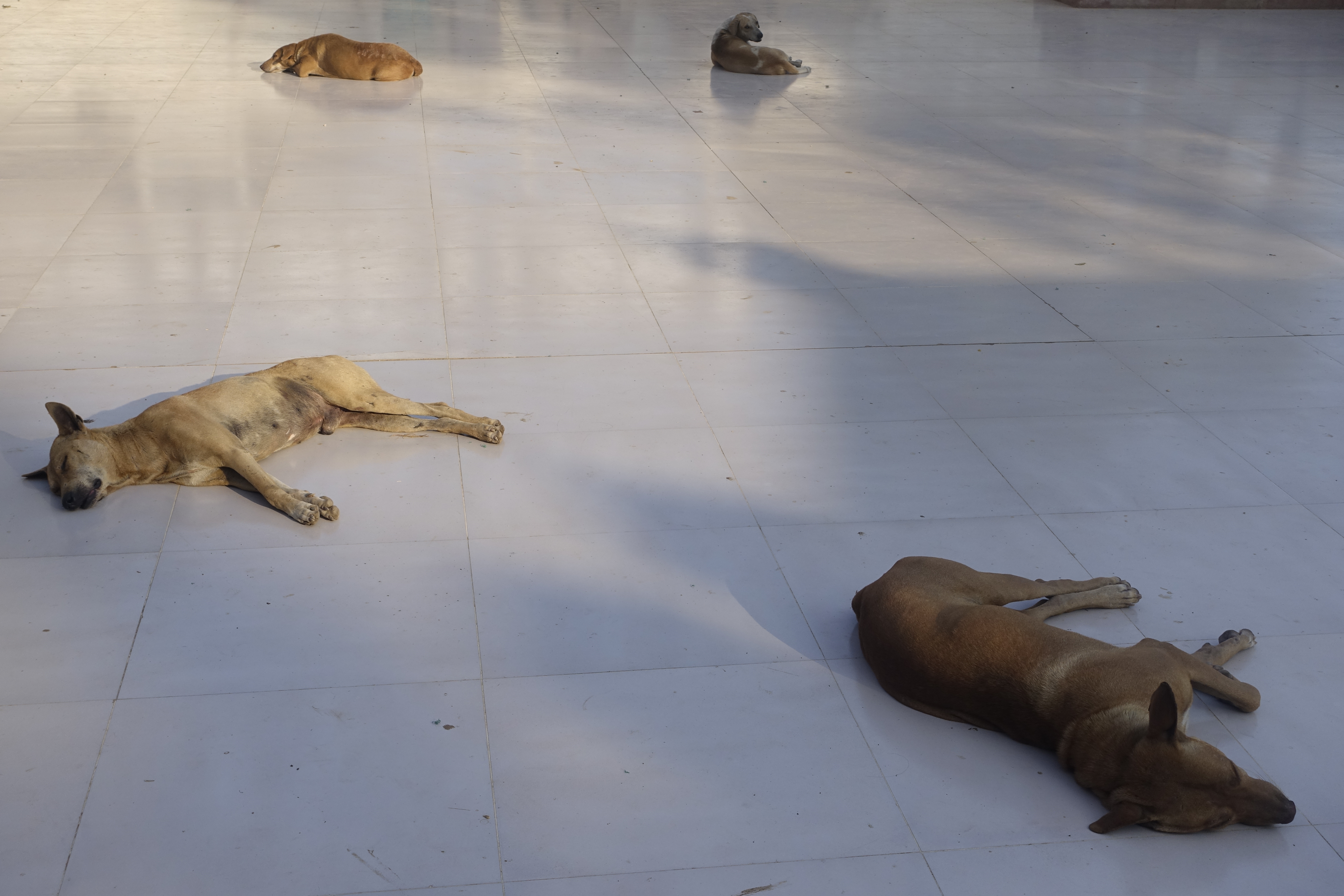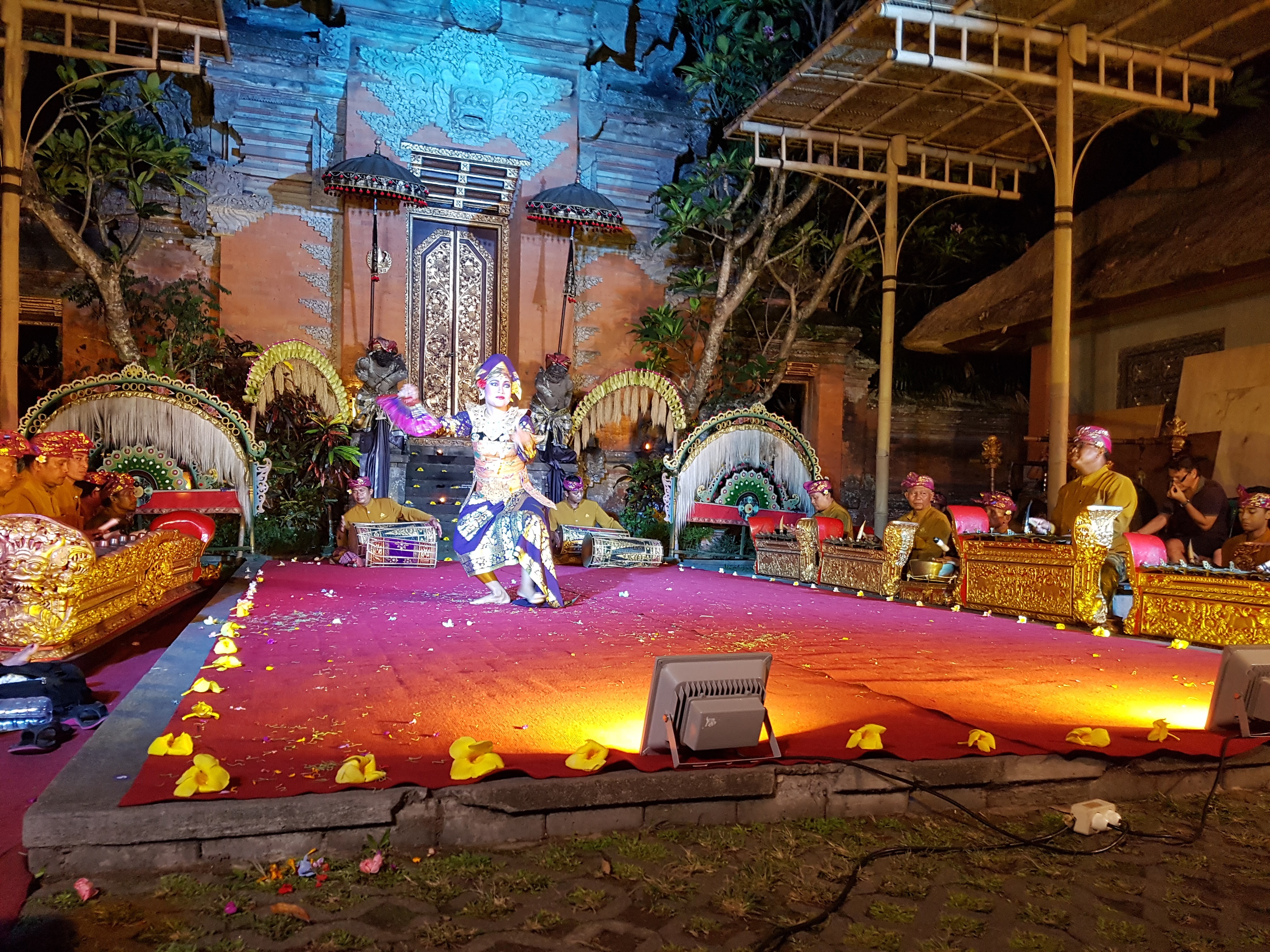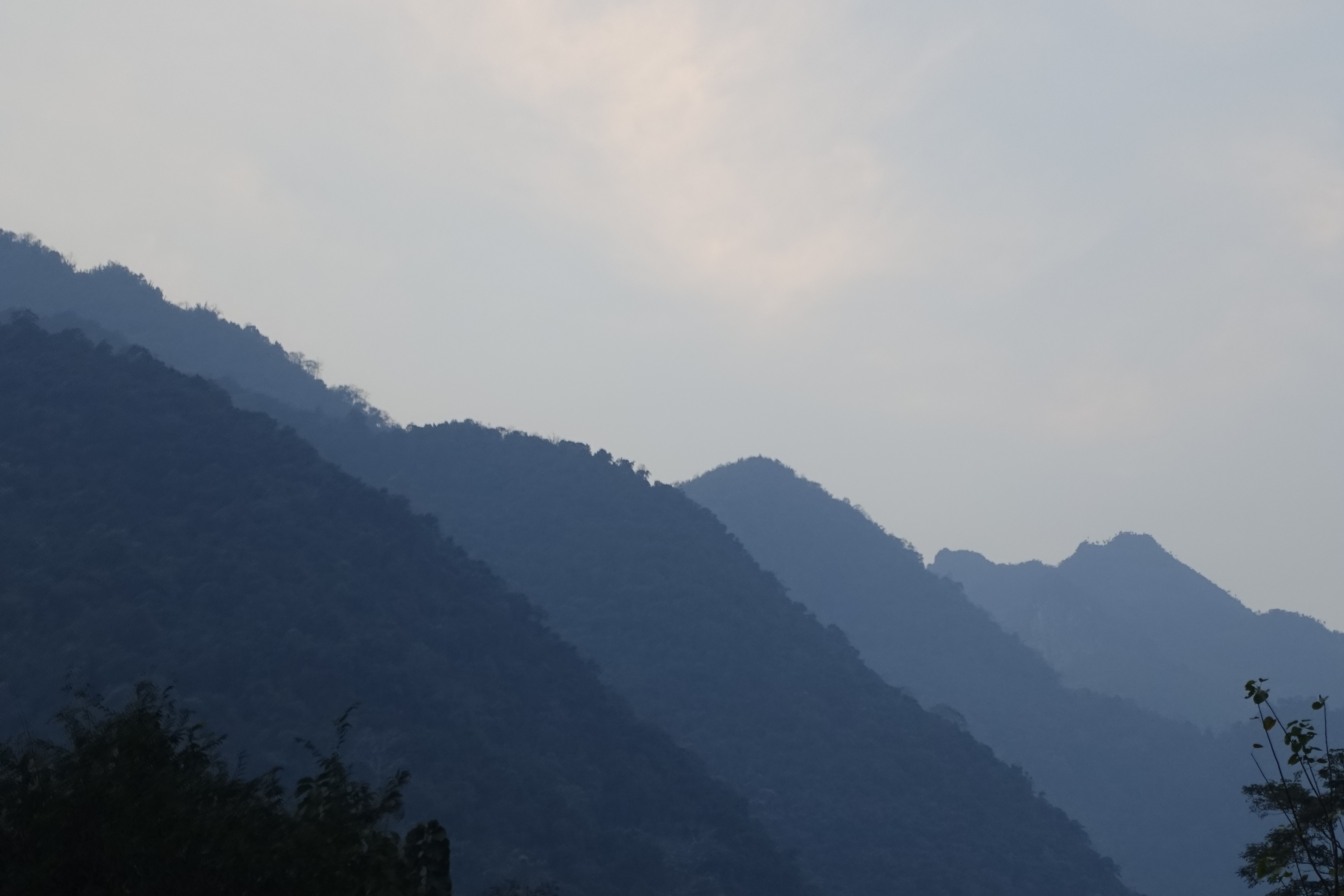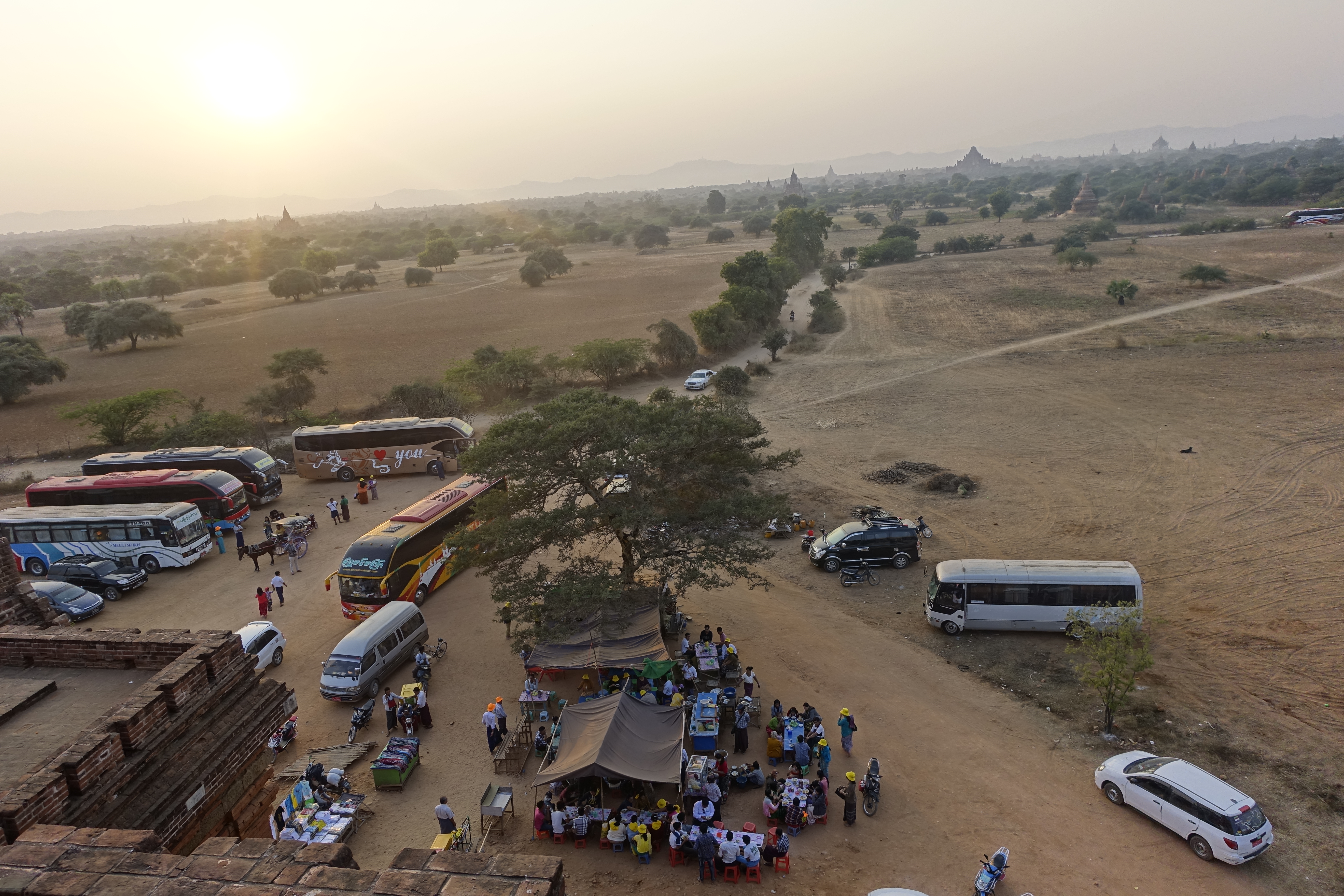Hanoi, Vietnam
Here I am in Hanoi, wrapping up my trip to Northern Vietnam, and I’m telling you about Laos. So it goes.
Laos is the chillest country in Southeast Asia. It’s the only ASEAN member whose capital could be described as sleepy. A South African barkeep at a Mexican restaurant in Vang Vieng told me that the PDR in Lao PDR stands for “please don’t rush.” Traveling in Laos pretty much requires that you take it easy. Clear information is hard to come by, roads are twisty and bus rides slow, ATMs uncertain. But things have a way of working out in the end.
After the jittery chaos and dusty heat of Cambodia, Luang Prabang was a welcome relief. Cool, misty, lush, hemmed in by rivers and surrounded by green mountains, Luang Prabang is lovely, and the town itself — the touristed bit, anyway — is strung with temples full of chanting monks, as well as boutiques and upscale restaurants that made it feel more like Mill Valley or Sausalito than anywhere else in Southeast Asia. On a day trip to the nearby waterfall, I wandered into a butterfly breeding center where I mentioned to the European founder that this was the first place in Southeast Asia that I could seriously imagine retiring. “Well,” he said, “nothing much ever happens here. But then, nothing happens in heaven.”
If you happen to find yourself in Luang Prabang, take the time to indulge in some fine dining at one of the fancy restaurants in town. I recommend l’Elephant. But also head down to the night market and go to the far end for a giant baguette sandwich with the freshest, most delicious avocados you’ve ever had, all for something like $2.
On my second pass through town, after a loop through the north, I also took a weaving class with Ock Pop Tock, which seemed to surprise everyone there, since weaving is women’s work. If you’ve never sat at a loom and created a piece of cloth, I recommend it. I can’t claim that I fully understand how the machine works — there are a lot of knots involved in creating the actual pattern — but at least I have a sense of what the work is like.
Trekking in Luang Namtha (photos)
After lingering in Luang Prabang a little longer than I intended, I headed to Luang Namtha, in the northwest, for some trekking in the Nam Ha Protected Area. I was dreading the long minivan ride, but it turned out there were just four passengers, including a Lao physics teacher who gave us information along the way. With space to spread out and the leeway to ask for stops when we needed them, the trip was far more comfortable than similar journeys in Thailand or Myanmar.
In Luang Namtha, I booked a Green Discovery Laos jungle trek with one of my fellow bus passengers, and the next morning we walked off into the forest. The hike was more strenuous than the treks I’d done in Thailand and Myanmar, with long climbs and descents along slippery mud trails that clung to cliff edges. I was grateful for the bamboo walking pole the cook cut for me. When I was able to take my eyes off my feet, I savored the jungliest of jungles I’ve yet been to, a damp, ever-shifting world of micro-environments: now a grove of wild bananas with their giant leaves, then a cool, dark stand of bamboo hung with spiderwebs, then a passageway through towering old growth hardwoods wrapped in choking vines.
We spent the night at a jungle camp of bamboo shelters in a bamboo forest. Over a bamboo-wood fire, the cook boiled bamboo root soup inside a log of green bamboo, while our guide spent a couple of hours slicing bamboo into strips to use as twine on his rice farm, which he works in the off season. (He would carry the heavy bundle out of the forest the next day, saving himself the $3 or so that he would otherwise have spent on a year’s supply of manufactured twine.) It’s hard to imagine how Laotians would live without bamboo.
The night was very cold, and I spent much of it hoping it would be morning soon. We were grateful for the rekindled fire at dawn, and for the coffee — three-in-one packets in water boiled in bamboo.
In the night we had heard several gunshots far off, and as we hiked that day, we spotted a trail of blood heading off into the woods. Local people aren’t supposed to hunt in the protected area, but they do, and the government doesn’t have the money to pay for enough rangers to stop them.
Down the Nam Ou (photos)
Information in Laos can be hard to come by. I’d been told in Luang Prabang that there was no way to get directly from Luang Namtha to Muang Khiaw, on the Nam Ou River (redundant, since nam means river), but in Luang Namtha I discovered otherwise. On another half-empty bus, I headed east. I met an American on board who jumped off in the middle of nowhere to flag down a bus to Phonsali, near the Chinese border. A few days and towns later, I ran into him again, and I found out that he’d ridden most of the way up on a pile of rice sacks in the back of the bus, then come down the Nam Ou on a similarly crowded boat; in both directions, he was the only foreigner.
The route I took wasn’t quite so far off the beaten track, but tourism to the Nam Ou is still a trickle, especially compared to places like Vang Vieng. It’s impossible to book rooms ahead in these little towns, so you just have to show up and wing it. Muang Khua, the first town we came to, seemed not to know quite what to do with us foreigners. It’s a dumpy little down with dumpy little guesthouses where no one speaks English, and just a few restaurants that cater to foreigners. After dinner I wanted ice cream, and the only thing I could find was a Chinese shop selling Chinese popsicles for something like 20 cents a piece. I tried one and immediately spit it out: it tasted like chemicals.
The way you travel on from Muang Khua is you go down to the river at about 9 am, and you buy a ticket from the rickety shack where prices are written, in English, for the two main destinations: Nong Khiaw, where most travelers go, and the smaller village of Muang Ngoi, which comes about an hour before. I opted for Muang Ngoi, and I’m glad I did. Muang Ngoi is set at a beautiful bend in the river, with spectacular karsts towering above it. But what sets it apart is as much what it doesn’t have as what it does: no ATMs, no paved roads, no high-end hotels, just one main street. It does have twenty-four hour electricity, a recent development, and Wi-Fi here and there, and the street is now lined with cafes and craft shops and guesthouses whose bungalows look out over the river, but the wider world still feels a million miles away. And if Muang Ngoi is still too connected for your taste, you can hike out to Ban Na or one of the other nearby towns and stay there instead, where the price of your guesthouse will drop from Muang Ngoi’s steep $8 to something more like $1.25. (I made the hike but didn’t stay the night.)
After lingering in Muang Ngoi for a couple of days, I took the boat down to the larger town of Nong Khiaw, where I indulged myself with a stay at the lavish Nong Kiau Riverside Resort, which felt like a luxurious splurge after my days of jungle trekking and drifting down the river, even though it only cost around $30.
In Nong Khiaw, every trekking shop claims it can take you on the 100 Waterfalls trek, but only Tiger Trail has access to the real thing, a trail that they opened up in 2009, in partnership with the local villages. It’s billed as the greatest hike in the world, which is a bit of an oversell, but it is pretty amazing to spend part of the day walking in a small river, scrabbling up through the cascades.
Booking the hike, though, gave me a peek into the complexities of expat-run businesses in Laos. We happened to visit the shop when the New Zealander who runs it had just returned from a few days away, and we overheard him running a long, exasperated staff meeting, half in Lao, half in English, during which he pleaded with his employees to do things, not just stand around, and to give clear information and simple answers when asked. Later, he told us how hard it is to get his workers to explain things to Westerners in ways we can understand — they go off on tangents, emphasize irrelevant details, and generally make things more confusing than they need to be. The gap is probably one of education. We often forget how many years we spent learning to organize information in particular ways: writing an outline, writing a paragraph, identifying the topic sentence, etc. If you don’t have that training, that kind of thinking doesn’t just emerge naturally. As much as the New Zealander wants to train his employees so that they can start their own businesses, there’s a gulf that is not easily crossed.
After another couple of days in Luang Prabang, I said goodbye to Northern Laos. It was beautiful, though not as spectacular as Northern Vietnam. There were no great monuments to see, no festivals to experience, not a whole lot to do. I didn’t forge any particularly strong friendships, the way I did in Thailand and Myanmar, and have done lately in Vietnam. Still, during my time in Northern Laos, I felt more at ease, more relaxed, than pretty much anywhere else on my trip.
The Plain of Jars (photos)
Near the sprawling town of Phonsavan is a mysterious group of archaeological sites, the Plain of Jars, where a neolithic people some 1,500 to 2,500 years ago created massive stone jars and hauled them to various hilltops. Their purpose remains obscure. Some of them have round mouths, some are more rectangular. Some have lips for lids, some don’t. A Frenchwoman, Madeline Colani, did some research in the 1930s and found cremated remains in a jar, but she’s the only one to have done so. Research did not resume until 1994 — interrupted by, among other things, a very long US bombing campaign during the Vietnam War — but recent research is starting to emerge, and I was lucky enough to find a guide who had worked with the Australian team whose discoveries have recently made the news.
I’d come for the jars, but Phonsavan turned out to be about unexploded ordnance (UXO) more than anything else. On the main street in town are offices of the Mines Advisory Group (MAG), which does bomb clearance and awareness trainings, as well as an organization that helps to rehabilitate bomb victims. The UXO are the aftermath of a decade of American bombing. The campaign, from 1964 to 1973, sprinkled Laos with cluster bombs, many of whose “bombies,” as the locals call them, didn’t blow up as planned. There are now some 80 million unexploded bombs throughout the country, particularly concentrated around the Plain of Jars and the Ho Chi Minh Trail further south.
None of this is academic. As you travel around, you see bomb casings used everywhere as a kind of decoration. As we hiked from one jar site to another, we looked out from a hilltop to an area of unfarmed land where MAG volunteers were at work clearing the bombs. There are bomb craters along the path, now covered in grass, and at one spot you can see the trench dug out by a crashing plane. We found bits of the plane — wires, metal fragments, live bullets — and then, a bit further down the trail, my guide suddenly jumped back: “That’s a cluster bomb detonator.” It was just a tiny circle of metal, green with age, that I might easily have missed. The guide marked it off with branches and notified the people at the entrance to Jar Site 2 when we got there. On the way down, he told me about how his brother had been killed some years earlier by a pineapple, a more dangerous variety of UXO. He’d been fishing, and he decided to make a fire and cook some food in a nearby rice field. The heat of the fire set off a buried explosive, and that was that.
This all felt rather unreal, and I think my guide was much more shaken than I was. He kept telling me that he had goosebumps. There shouldn’t be bombs on marked trails, but sometimes they come up to the surface during the rainy season. On our way back to town, we had to stop on the road while MAG blew up a couple of bombies they’d found. To me, it felt surreal. To my guide, it was a sound he’s been hearing his whole life.
Beyond the deaths and maimings, the UXO are also a drag on development, preventing local people from farming fertile land and from entering forests to gather resources. The ongoing damage caused by a war that ended decades ago is worth keeping in mind whenever we consider military responses to problems today. And the slow, labor-intensive clearance process seems like something that could be improved upon with technology, though I’m hardly an expert, and I assume there are people thinking about the issue. Still, if you’re an engineer and you want an interesting problem, here’s one.
Vang Vieng (photos) and Vientiane (photos)
After hearing so much about Vang Vieng for so long, I was disappointed to discover an overbuilt, under-regulated mess. If you haven’t seen limestone karsts anywhere else, Vang Vieng is probably pretty cool, but it’s not terribly impressive after Northern Laos, and the town itself is rather grim. In its favor, it has the best-stocked convenience stores in the country.
Vang Vieng was, a few years ago, a destination for crazy parties, but that ended when some drunk Australians died while tubing down the river. What is replacing the party people, apparently, is Koreans. There are Korean signs in all the tour shops, and lots of Korean restaurants, and busloads of old Koreans, along with happy gaggles of young Koreans who are on short adventure vacations somewhere not too expensive and not too far from home. I don’t begrudge them any of this, and obviously I like hanging out with Koreans, but I don’t have that much to say either to Korean grandmothers or to Korean college students.
Vang Vieng was also, when I was there, very hot. It was even hotter when I got to Vientiane, a likable little capital with not very much to it. The biggest monument is a triumphal arch built from cement the US gave Laos to build an airport with. The rest of the town is low-rise and slow-paced, and it closes up by 10 pm. I found Vientiane more pleasant than I was expecting, but by that time I was ready for something new. When I landed in Hanoi, it felt like a return to civilization.





